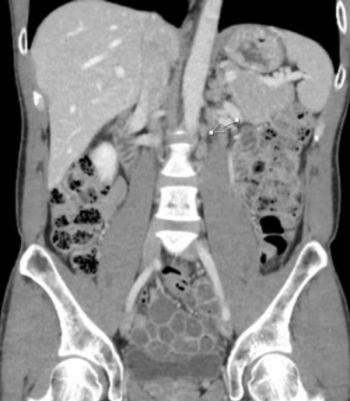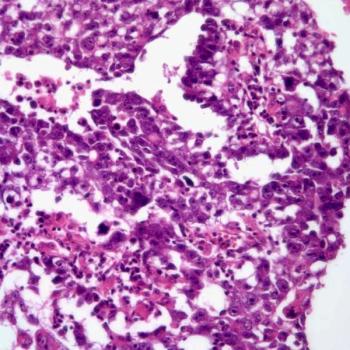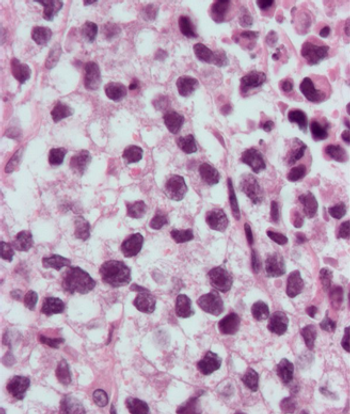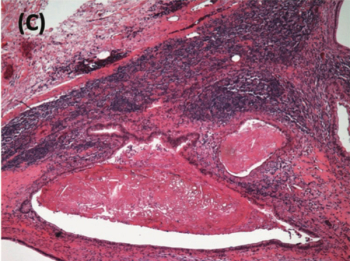
- ONCOLOGY Vol 14 No 10
- Volume 14
- Issue 10
High-Dose Chemotherapy in Poor-Risk Germ-Cell Tumors
Testicular cancer is a highly curable cancer. However, 30% of patients are refractory to standard therapy and will need additional therapy. This article focuses on the use of high-dose chemotherapy in germ-cell tumors.
Dr. Srinivas nicely summarizes the last 15 years of clinical data on the use of high-dose chemotherapy in germ-cell tumors. The first takeaway message is that a very small proportion of patients who have failed two or more lines of conventional therapy will be cured with the application of carboplatin (Paraplatin)/etoposidebased high-dose chemotherapy. To facilitate the selection of patients for this approach, numerous prognostic factors have been established that can identify subgroups with a very low chance of benefit from high-dose chemotherapy.
The second importantand promisingmessage is that the precise role (if any) of high-dose chemotherapy in the more common setting of primary salvage therapy or treatment of untreated, poor-risk disease is undefined. Randomized trials in these settings, however, are nearing completion.
Proper Patient Evaluation
Management of patients with poor-risk germ-cell tumors is challenging for numerous reasons. One underappreciated aspect of care of these patients is the complexity of the usually straightforward process of identifying a true malignant recurrence. We are often asked to evaluate patients for high-dose chemotherapy for recurrent germ-cell tumors, when the necessary exercise of ruling out false-positive markers, growing or persistent teratoma, or sanctuary sites has not been undertaken. Such patients may require no therapy, depot testosterone, or aggressive surgery rather than high-dose chemotherapy.
These factors must be considered when evaluating the literature in this area as well. A number of the studies showing more favorable results of salvage therapy in germ-cell tumors have included patients in whom relapse was not unequivocally defined.[1]
Surgery for Local Disease
A second point is the role of surgery in this group of patients. In particular, there are numerous patients with persistent or recurrent localized disease (usually abdominal) for whom the proper approach is aggressive surgical resection. Indiana University has performed a retrospective review of all patients thought to have chemotherapy-refractory disease who were submitted to surgery for attempts at curative resection. All patients had serologic or other evidence of progressive cancer.[2]
A total of 48 patients were reviewed, 33 of whom underwent isolated retroperitoneal lymphadenectomy. Results showed that 38 patients (79%) were rendered grossly free of disease by surgery and 29 (60%) attained a serologic remission. Ten patients (21%) remain free of disease, with follow-up ranging from 31 to 89 months. Six additional patients are currently disease-free after additional surgery (four patients) or high-dose chemotherapy with autologous bone marrow transplantation.
Clinical benefit was obtained only in patients with a solitary site of disease at the time of surgery. Patients with multiple sites of metastasis, although resectable, were not cured. In carefully selected patients with chemotherapy-incurable disease, salvage surgery offers a significant prospect of long-term disease-free survival. Such decisions and surgeries should be made at centers with significant experience in germ-cell tumor management.
A final point concerns the availability of reasonable predictive prognostic systems that can identify a patient population in which high-dose chemotherapy is futile.[3] Patients with disease that is absolutely refractory to cisplatin (Platinol), patients with recurrent, primary mediastinal nonseminoma, and patients with persistent or rising high betahuman chorionic gonadotropin (HCG) levels do not benefit from high-dose chemotherapy and should be considered for clinical trials of novel agents.
Conclusions
Fifteen years of investigation of high-dose chemotherapy in germ-cell tumors have provided significant data regarding the utility of this modality for patients with advanced, recurrent disease. This body of research has also offered promising leads in terms of incorporating such therapy earlier in the course of treatment. At present, however, these therapies remain experimental, and all such patients should be strongly encouraged to enter available clinical trials.
References:
1. Margolin K, Doroshow J, Ahn C, et al: Treatment of germ cell cancer with two cycles of high-dose ifosfamide, carboplatin, and etoposide with autologous stem-cell support. J Clin Oncol 14:2631-2637, 1996.
2. Murphy B, Breeden E, Donohue J, et al: Surgical salvage of chemorefractory germ cell tumors. J Clin Oncol 11:324-329, 1993.
3. Beyer J, Kramar A, Mandanas R, et al: High-dose chemotherapy as salvage treatment in germ cell tumors: A multivariate analysis of prognostic variables. J Clin Oncol 14:2638-2645, 1996.
Articles in this issue
about 25 years ago
New Awards Spotlight Courage of Cancer Survivorsabout 25 years ago
Children’s Art Project at M. D. Anderson Cancer Centerabout 25 years ago
Settling on an Increased NCI Budgetabout 25 years ago
Computer Billing Standardabout 25 years ago
Ligand Receives FDA Marketing Clearance for Bexarotene Gelabout 25 years ago
Mayo Clinic Study Shows Patients Uncertain About Cancer Risk Termsabout 25 years ago
Multidisciplinary Management of Pediatric Soft-Tissue SarcomaNewsletter
Stay up to date on recent advances in the multidisciplinary approach to cancer.





















































































